The great giving up (and the film that made it worse)
This is the final in a series on Planet of the Humans. The other posts are here:
Post 1 – on the myths and misunderstandings in the film
Post 2 – on where we’re at in 2020, with climate and clean tech
It’s sad, but there’s no real end to the litany of things that threaten to derail the effort to uncouple human life from the burning of fossil fuels. For a while, it was at least simple. Moustache-twirling top-hatted fossil fuel execs running comically sinister astroturfing to scare us into hating alternatives was the norm.
Today, the call is coming from inside the house. You can tell something bad is happening because there’s a whole lot of misinformation and deception flying around, and a whole lot of people are trying to excuse it as acceptable.
Lies are glimpses of feeling; surface markers of some deeper sentiment taking shape and demanding to be fed. It got worse in the past week, and we need to figure out why. So please join me, and we’ll get to the bottom of it.
The cows are returning to the sea
A few weeks back, false claims of the natural world healing due to COVID-19 lockdowns spread virally. Swans that were always present in Venice were falsely framed as ‘returning’. Dirt settling on the floor of Venetian canals (instead of being whipped up by boats) was presented as ‘less pollution’. Paired with these memes was a simple explanation of the feeling those lies were fuelling: ‘Nature is healing. Humans are the virus, and corona is the cure!’. Mercifully, it became a widely mocked meme inspiring its own format of joke:
In parallel to claims of wildlife returning and nature ‘healing’, the pandemic has been touted as the cure to the climate problem.
As I wrote, this badly misdiagnoses the problems of climate change and pollution. Coronavirus will lead to a drop in emissions, but the coupling between human existence and fossil fuels will have not been broken. To break this chain requires enormous quantities of hard work, sacrifice, effort and collective action.
The latest data show that the predicted drop in emissions is likely to be the biggest ever – but still badly insufficient. The drop so far in carbon emissions is so small that it was immediately subsumed within the natural variability in those atmospheric levels, and it’s predicted to be tiny for the whole year. Readings of atmospheric concentrations of CO₂ at Mauna Loa observatory just hit their highest values ever recorded.
Nature is not healing.
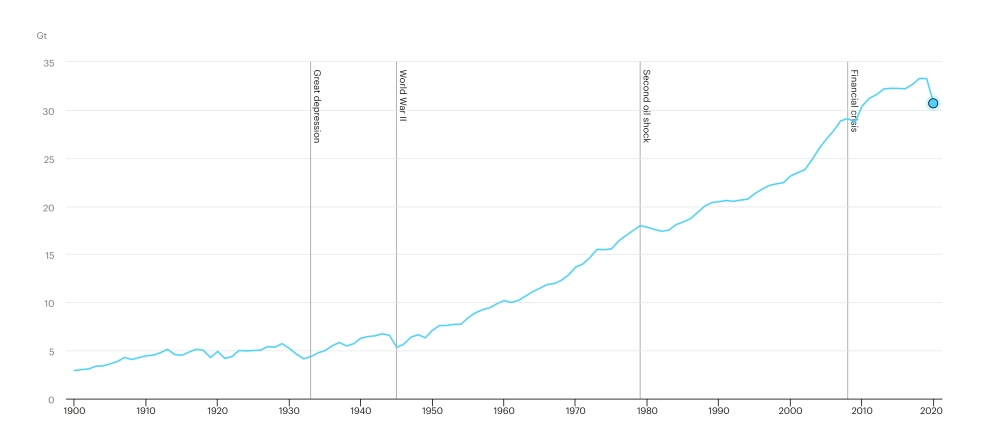

The pretence that coronavirus constitutes effective climate action is used to service a singular worldview: ‘human presence is the thing that is damaging the planet’s environment’. It is people that cause harm, and so people being locked in their homes must be framed as ‘healing’.
‘We are the virus’ is meant literally. A virus cannot change its ways, or alter its consumption. It cannot figure out a better way to live. It is a destructive automaton. It is a message of hopelessness, framed in the language of hope.
Nothing is going to work
A new documentary released by Michael Moore, Jeff Gibbs and Ozzie Zehner, Planet of the Humans, slots neatly into pre-existing demand for content that uses misinformation to frame humanity as a virus.
Part of reason it serves this purpose so well is that the density of falsehoods is incredible. Every re-encounter brings a new discovery. It is the gift that keeps on taking.
Since I published my first post on this, a litany of new errors, has emerged, partly covered here. In further interviews, the filmmakers botch the basic energy math even worse than the film. One scene, where it’s alleged solar enthusiasts ‘faked’ solar power for a festival was, it turns out, seemingly filmed in 2005 (two years prior to the release of Apple’s iPhone). Another, larger event presented as being falsely powered by a nearby solar field was in 2015 (Moore says it was ‘last year‘), and that solar field was only ever marketed by organisers as powering a small nearby pavilion.
One interviewee, Richard York, whose research suggesting renewables don’t displace fossil fuels was featured in the film, has since told media that “over the past decade, there have been more serious efforts”. The filmmakers had erased the date on the 2012 paper from the graphic on screen. Another interviewee, Richard Heinberg, revealed his interview occurred in 2009, 11 years prior to the release of the film.
The deceptions in the film build towards a single claim about renewables: they are technically incapable of decreasing emissions. They pile on top of existing output instead of cutting downwards, they encourage over-consumption and the fossil fuels required to build them are far greater than anything they could displace.
It’s all wrong. The past decade has proven that renewables can kill coal, and increasingly, gas too. 2019 was, in fact, the first year that low carbon sources out-generated coal:
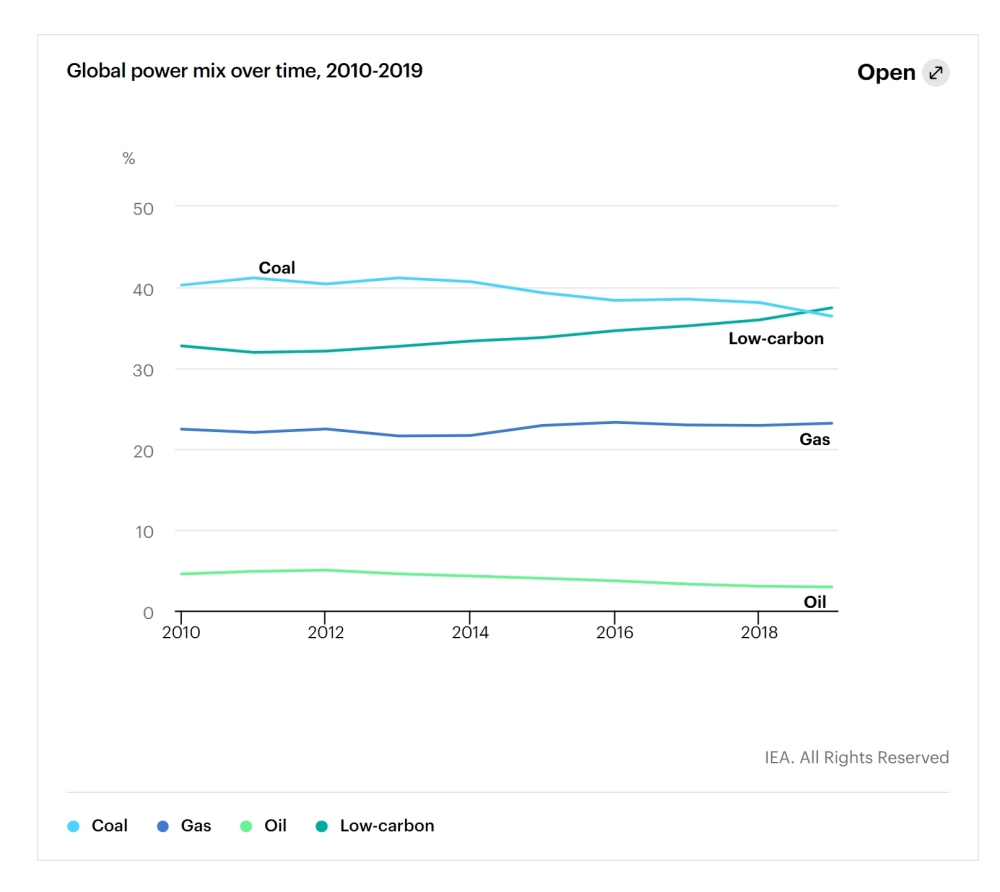
It is not smooth, or simple, and it will get harder. Renewables got efficient and cheap, but they need to be integrated into grids in large volumes. They need to fulfil their potential of democratisation and distribution. More importantly, those who build it face the challenge of slotting into communities, landscapes, natural areas and cities with maximum respect and minimum impact. On top of all that, every megawatt hour is a bloody fist fight with panicked, powerful incumbents.
But the fact that there is still plenty of hard work to do does not take away from the fact that the past ten years proved that the machines do what it says on the god damn box.
They filmmakers complain that the mineral and mining footprint for things like electric vehicles is non-zero. This is true of any manufactured object, so their argument is, very simply, the disavowal of any technology, of any type, scale and ownership, for any component of climate action. Community owned wind? Not allowed. Rooftop solar? It’s made from quartz, so no. Low income electricity bill reduction through locally-owned batteries? Not a chance; lithium is mined by skinny kids. Didn’t you see the montage?
The oft-repeated gripe the filmmakers cite is “the story that climate change plus green technology equals were saved. It’s not the correct story”. But no one is telling this tale. They are shadowboxing their own imagined parody of environmentalism.
The only explanation for this weird faux-argument is that wind and solar were prominent in the early 2010s. Electricity is the fruit that hangs lowest on the list of climate actions, and wind and solar shot ahead of competitors around 2005 – 2010.
Everyone else moved on. A variety of tools form a major part of the plans of nearly everyone playing in this space. The International Energy Agency’s ‘Sustainable Development Scenario’ lays out one potential mix of actions to get us where we need here:
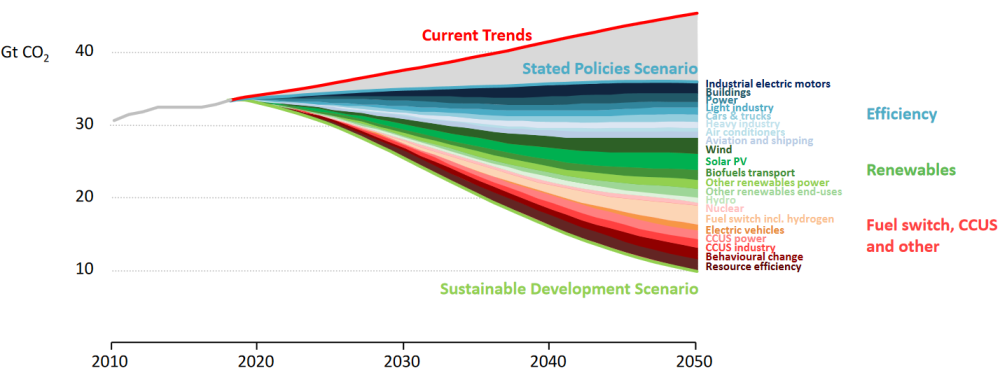
Climate-solutions-hitting-each-other-in-the-face is a bad habit that crops up around the big climate egos. People clutch their preferred thing with such intensity that they perceive all others as enemies, just as vile as fossil fuels. In this case, the filmmakers can’t advocate for reduced consumption without also advocating for taking an axe to the machines. But the viral reception to this film suggests something far deeper and far more significant than scrappy fights between the coloured strips on the chart above. The misinformation was feeding something big.
The big picture is bad too
Many reactions to my countering of the myths argued I’d missed the broader message of the film. This is true. I was focused on the smoke, not on the fire.
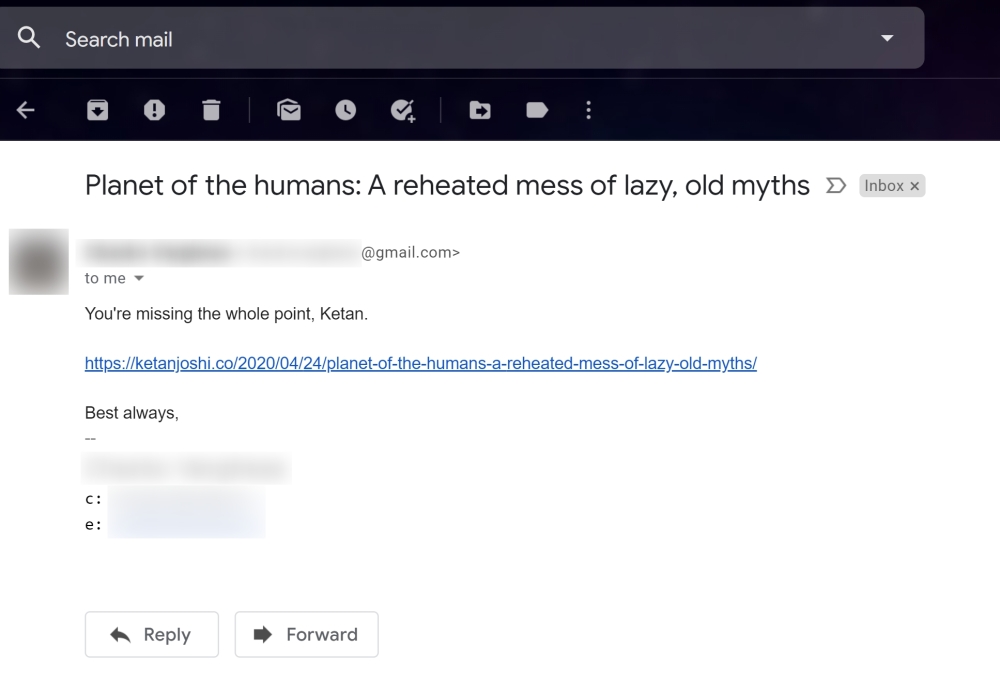
The ‘bigger picture’ of this film seemed like a Jackson Pollock painting. There are mentions of growth, consumption and population, but no real clarity or insight. It did not seem to have a core message; so much so that its ambiguity meant it drew support from environmentalists, conservationists, anarchists, anti-capitalists, pro-capitalists, anti-growthers, pro-growthers, climate deniers, fossil fuel advocates, nuclear advocates and a scattering of edgelords worried they’d miss out.
It is a mess, but there are scraps in there for everybody with sufficiently low standards to feed on.
After some time, I think I the big picture finally resolved. The litany of attacks on actions – wind, solar and the hard work of environment groups – are building towards a clear conclusion. It is not about capitalism or consumption (if it was an anti-capitalist film, it wouldn’t have been released in partnership with the fourth-biggest corporation in the world, Google, and it wouldn’t have been widely celebrated by the planet’s worst capitalists). The film’s core message is that we are invasive cells, breeding rapidly and programmed to destroy. We are the virus. The planet has a bad case of the humans.
“We’re kind of like cockroaches on the planet”, one vox-pop subject tells the director, in the film’s opening seconds. “Not being judgemental or trying to play God, but we’ve got to deal with population growth”, an anti-wind farm protester declares. “Without seeing some sort of major die off in population, there’s no turning back”, anthropologist Steven Churchill adds, later on.
Population growth is present in this film to serve this broader narrative. One graphic shows what is presumably a ‘forecast‘ shooting up to 60 or 70 billion people within a few years. Just like the exponential growth of a virus; something we know far too well this year.
Except, the United Nations predicts population growth is slowing, and will peak at 11 billion by the end of the century. Again, misinformation serves to feed the feeling, with enough pseudoscientific information to spark emotion but nowhere near enough specificity to inform the viewer.
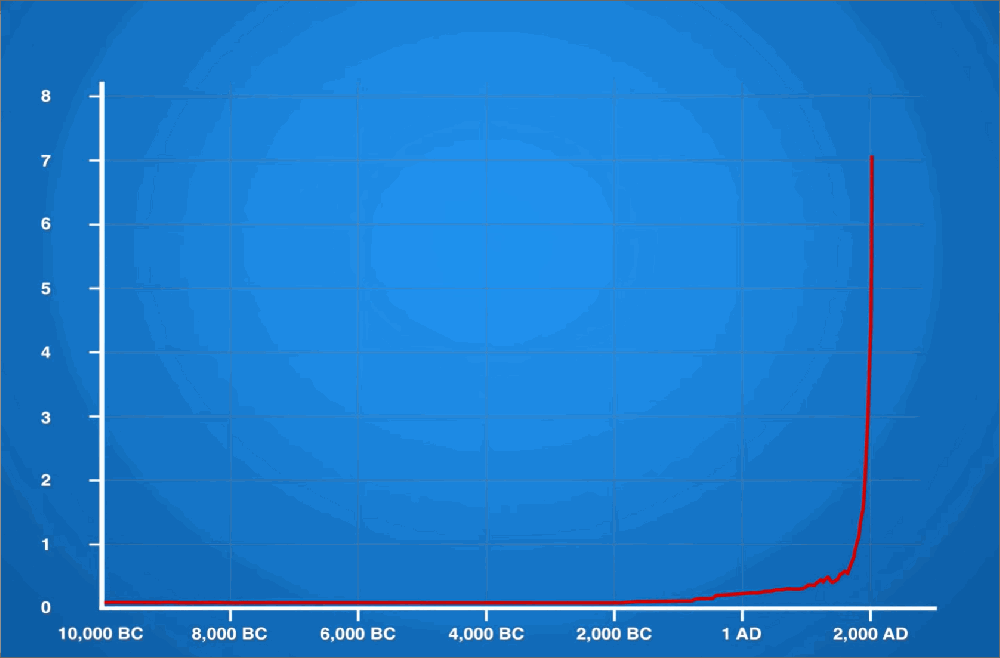

The film closes with the director’s narration: “We must accept that our human presence is already far beyond sustainability, and all that that implies…we must at long last accept that it’s not the carbon dioxide molecule that is destroying the planet, it’s us”. Humans are the virus.
Whether it was clever timing or sheer luck, the message of the film ties in perfectly with pro-pandemic, anti-human memes. The filmmakers know it, too.
“The fact that within days animals are coming back and the skies are blue tells us that we don’t have to build a million square miles of solar panels or buy a zillion electric cars”, the director told Reuters. “Mother Nature has sent us to our time-out rooms right now and we’re supposed to spend this time thinking about how we messed up things so bad”, executive producer Michael Moore said. Mother Nature sure has a genocidal way of sending messages. Email would have been better.
Most cruelly, producer Ozzie Zehner said in the same interview that “this brief virus period in one week has done more than the environmental movement has done in 30 years to reduce consumption”. As we saw earlier, it’s bullshit. We’re still pumping greenhouse gases into the sky.
Again, the environmental movement hasn’t killed more than 250,000 people in the space of weeks and caused massive unemployment and suffering. I assume the strict ‘don’t do genocide’ standards of the mainstream environmental movement will be one thing these guys will change when they take over.
Later, in an interview on Moore’s podcast, the director says “If this civilisation tumbles down and falls apart on the way down we’ll take everything with us….starving people do horrific things”. There are so many starving people in the world, and they are not doing horrific things. This falsehood, like the film itself, services the view that humanity can only operate in a mode of pure destruction. We have no agency. We are the virus.
Moore is intensely anti-capitalist. In the same way a solar panel made from fossil fuels is unacceptable, the film contends an environment organisation that partners with a corporation is unacceptable too. But their anti-capitalist argument is nowhere near as careful as, say, someone like Naomi Klein (who personally tried to talk Moore out of releasing the film). Klein builds a detailed picture of human-life-enriching alternatives in her critique of capitalism and greenwashing; this film goes to great lengths to avoid doing that.
It is clear they are trying hard to avoid any detail about what a technology-free, capitalism-free climate plan would look like. I think that’s intentional.
Detail or evidence about climate solutions would have neutralised the emotion they were seizing on. If the creators had a vision, the film would have flopped. The presence of a pathway out of the crisis would have allowed for the possibility of human agency.
Since the film’s release, the filmmakers have vaguely suggested a collection of progressive social policies (‘free childcare’), and ideas like ‘planting 1 billion trees‘ or ‘demand better 21st century buses and trains!’ (manufactured without mining or fossil fuels, somehow?). Despite the opportunities to lay out a plan, none exists, beyond randomised platitudes.
And somehow, none have mentioned the other great big non-technological climate solution: keeping fossil fuels in the damn ground and forcing companies to pay penance; presumably because doing so would cause their Youtube stats to nosedive as deniers left in droves.
The cocktail of misinformation, hopelessness and anti-human weirdness in this film has boosted a phenomenon that was rising before the plague. It plugs into a sentiment that has cropped up in spot fires, but now seems to be building into a full blown catastrophe. It is the evil left-wing twin of climate change denial, separated at birth and raised in a progressive family: doomism.
Franzen rising
The presence of people creates climate harm because those people are born into a cage created by the fossil fuel industry.
Executives in these companies are delighted to see blame heaped on humans instead of their sooty shoulders. The cherry on the top for them must surely be seeing their babies – anti-wind and solar myths created by their PR departments in the early 2010s – used towards that goal. The global roar of celebration from every single climate change denial group in the world at this documentary is a clear confirmation of this.
They are celebrating doomism: the umbrella philosophy that provides relief to fraught industries keenly hoping that we won’t notice that escaping their clutches is easier than we think. It contends that there is no point to acting on climate change. It is too late. Humans are unchangeable, or the sky is already wrecked, or both. We must settle in, kick back and commence the great giving up.
It received a boost in 2019, when author Jonathan Franzen argued that “The climate apocalypse is coming. To prepare for it, we need to admit that we can’t prevent it”. This, too, drew on the same tropes that Planet of the Humans does, such as the creation of criteria that excludes the use of technology. It also used misinformation to misrepresent our chances of finding a way out, though at least Franzen was unintentionally hilarious about it: “As a non-scientist, I do my own kind of modelling. I run various future scenarios through my brain”.
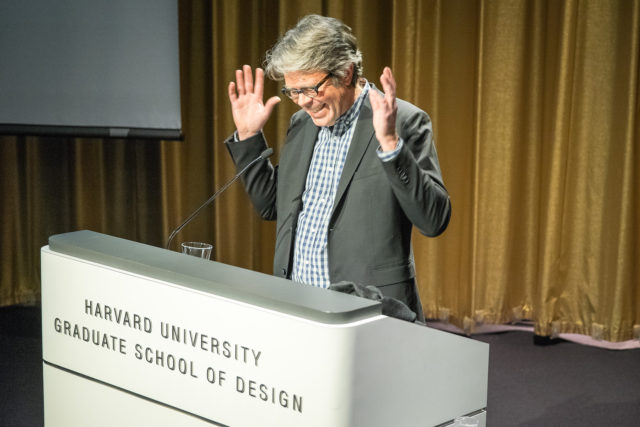
Franzen, like the director of Planet of the Humans, Jeff Gibbs, is a conservationist hailing from an era when climate didn’t dominate the environment movement. They are pissed off the topic has inflated to fill every space. “I’m heartened to see your inclusion of biodiversity”, said Gibbs, in an interview with Extinction Rebellion’s co-founder Clare Farrell, straining to not think too hard about the technological implications of the group’s net zero by 2025 target.
It’s hard not to feel like they’d prefer if we gave up on that problem and worked on more ‘local’ conservation efforts instead. It is a noble concern, but because it must happen at the exclusion of all other things, it translates into a destructive loathing for renewable energy and a need to exaggerate its environmental impact.
“Every renewable-energy mega-project that destroys a living ecosystem—the “green” energy development now occurring in Kenya’s national parks, the giant hydroelectric projects in Brazil, the construction of solar farms in open spaces, rather than in settled areas—erodes the resilience of a natural world already fighting for its life”, wrote Franzen. It may as well have been the droning narration on Planet of the Humans.
You can see why those irked by climate’s prominence plagiarise so deeply from climate denial; both are essentially working towards pushing this issue back into irrelevance. Both doomism and denialism share a seething hatred of renewable energy: the prospect of effort and human will resulting in any real action is a grossly unacceptable attack on the drive to surrender.
The great giving up draws on deception to create a thick, choking fog of helplessness. It copies and pastes memes originating from the PR departments of corporate carbon titans. It predicts humanity will grow vicious and breed wildly. It frames coronavirus as our well-deserved punishment. It builds a bed of bullshit to reach its conclusion: forget about climate change, and go back to worrying about your backyard, instead.
There was no worse time to burn a hole in this fabric
Planet of the Humans is an act of destruction that comes at an extremely sensitive moment. In late 2019, the climate movement was picking up steam. The youth climate strike movement was expanding rapidly and growing up, culminating in history’s biggest ever climate marches. Greta Thunberg’s rallying cry was simple: technology, sustainability, efficiency and ‘hope’ are all insufficient platitudes unless they’re paired with action.
“Now we’re almost at the end of my talk, and this is where people usually start talking about hope, solar panels, wind power, circular economy, and so on, but I’m not going to do that”, she’d said in a 2018 talk. “The one thing we need more than hope is action. Once we start to act, hope is everywhere. So instead of looking for hope, look for action. Then, and only then, hope will come”.
As this call for action began to slowly seep into the corporate and political system that had safely ignored action for so long, a pandemic hit the world. It has badly reduced public interest in climate, but the recovery process can become a conduit for the systemic and deep change so badly needed. The climate strikes, Australia and California’s climate-intensified bushfires, and now the vast, terrifying global reset of coronavirus have all made this the most intense time in the history of climate action.
Michael Moore, Jeff Gibbs and Ozzie Zehner arose at this moment to pioneer a left-wing anti-renewable movement coated in a thick sheen of hopelessness. They’re trying to replicate environmentalism’s opposition to nuclear, but without a Chernobyl or Fukushima to lean on they’re forced to reheat decade-old memes instead.
Thunberg’s message of action only works when paired with agency. We must know that we have no fate. We are not doomed, and we are not destructive, at least not by default. Our presence is not toxic, and our hearts are not black. We are not cockroaches, or a fucking virus. What good is Thunberg’s plea for action, when so many are celebrating the use of misinformation to spread helplessness?
We are capable of finding a way out of the fossil-fuelled cage we were born into, without leaning solely on a single solution. Millions of smart, brave people are on the case, and every day they are forced to strike a balance between attaining goals and retaining principles. These heart-scarring sacrifices are trivia to the people who made Planet of the Humans.
We can put blood sweat and tears into repairing the broken systems that brought about this cataclysmic global threat, repairing our relationship with our only home and profoundly enriching human life at the same time. It is pseudo-serious fatalistic bullshit to say we can’t.
The challenge is so complex, involving alliances between so many natural enemies that only cohesion, tolerance and kindness can sustain a response. The people who made this film dropped a grenade in the middle of a fragile coalition at the worst possible time, and they’re beaming with pride, oblivious to the carnage.
Header image: “Pain and fear, pain and fear for me, alive or dead, no hope, no hope”, The life and adventures of Nicholas Nickleby ; The adventures of Oliver Twist / by Charles Dickens ; with fifty-nine illustrations by F. Barnard [for the first work] ; with twenty-eight illustrations by J. Mahoney [for the second work]. – London : Chapman and Hall, [1875]

‘The bigger picture’. However hard it may be to deal with, Growth-Optimist Climate-Science is an oxymoron. http://www.gci.org.uk/movies/Powerdown_a.mp4
LikeLiked by 1 person
What do you think about the capitalist ties mentioned though? To me, the biomass issue was basically the film’s major point.
LikeLike
Hi All, I have started new green initiative – planting trees and taking care of them, so they won’t get harmed by people or animals. Moreover, I am sending photos of this tree to the Donator after 1, 3, 5 and 10 years after it was planted. If you find it interesting or just want to give somebody such a gift during this hard times for all of us, check out my website:
https://www.planttreeswithme.org/
Let’s plant together for all of us!
LikeLike
In #planetofthehumans, the attack on renewables may be have overdone. However, renewables have been a cover for “Growth-Optimist Climate-Science” that seems to cling to the idea that affluent lifestyles need not change much if electricity can be made cleaner.
In the medium term we need a vision of happy living without flying, beef and cars – even electric cars. Let’s call that happy degrowth. http://www.brusselsblog.co.uk/car-free-living-and-happy-degrowth/
LikeLiked by 1 person
Overdone certainly, and stuffed with cheap points. You don’t have to pick cheap holes in the renewable energy movement to make the overriding point that in the time we have got, it ain’t gonna be enough. Almost everyone has to change their ways and soon to avert a very unpleasant future for our kids and grandkids.
LikeLike
We cannot graft our fossil fuel lifestyles onto PVs and windmills. Yes, we could perhaps mine and refine enough metals and minerals for the overdeveloped nations to attempt that step, but what about China? Russia? India? Africa? Not only are fossil fuels required for all that mining and refining, but the mining will keep getting harder to do, and thus require more fossil fuel than at present. In just a few decades, the renewable energy harvesters will be worn out, the grid will need rebuilding, and then what? And please do not place any bets on carbon capture and sequestration that doesn’t include planting millions of trees and increasing global average soil organic matter by several percent.
I am not seeing serious rethinking of our fossil fuel technologies and lifestyles. ‘You cannot solve a problem using the same mindset that created it.’ So we need a whole different perspective on sustainable development: https://www.researchgate.net/publication/256048802_Sustainable_Investment_Means_Energy_Independence_From_Fossil_Fuels
For several years now, i have pursued a very small and sporadic campaign to ban leafblowers in my city, as a small, easy and active step in the right direction. This idea has a few fans, and an overwhelming majority of skeptics who say,’It’ll never work.’ If we cannot even stop using machines that are nasty in a number of ways, that are truly not necessary, and that perform tasks well within our physical powers, we deserve to be toast.
However, it is very difficult for a lone individual to extract themselves from our fossil-fuel-addicted system, and survive and thrive alone. We need systemic change, and it is not available on the market. It would help if ALL prices were required to be posted in kwhr and GHGs as well as dollars.
LikeLike
Then why, Geoff, does the movie not talk about happy living without flying, beef and cars? Why is it so doomist, why does it make hundreds of thousands of people waste their time on hashed out pseudoskeptic arguments and why does it throw organizers like Bill McKibben under the bus?
LikeLike
I dont know why it doesnt say these things because I didnt make the film. Here are a few films i have made so you can criticise them. THE FINAL CURVE https://youtu.be/O-fFn_MQwzM , THE LAST FAIRYTALE https://vimeo.com/387928662 ,
JANET and the PLANET https://vimeo.com/403663514 .
LikeLike
As we see conventional renewables are slow to meet the rate of destruction on this planet, even in a best case scenario that can be projected in any rational way. There are many specifics that contribute to out predicament such as even a badly wired and inefficient grid even if it had all renewable sources. Here is information that I invite the reader to investigate that presents many emergent solutions that WILL have to be used to save this planet if we are truly going to make it. https://ufsolution.wixsite.com/unifiedfieldsolution/proven-tech . There are many solutions when one “re-searches” instead of just accepting decades old theories that do not account for all of the real physics of Nature. As environmentalists, we need to think deeper and do some open-minded study. One example is that “cold fusion” (a mis-nomer that Pons and Fleishmann never used) is not ‘dead.’ People are quick to judge before looking into a matter. It is now being replicated as LENR/LANR along with a revision of the Copenhagen model of nuclear physics.
LikeLike
Sorry that I had to read through so much rot, three times no less, to find that it is just, to quote MacBeth, ” a tale told by an idiot, full of sound and fury, signifying nothing “. I should have stopped when he said that he had not seen the movie. And then all the marxist drivel, as if none of it had ever been tried… and failed miserably every time.Even an earlier reference to Naomi Klein would have saved me so much wasted time.
LikeLike
4% of animals are wild, 4% of energy is renewable, C02 up 50% in 30 years, humans and livestock are 96% of animals by weight on land. It will take Michael Moore and Global Socialism 50 years to wipe its ass we have to stop burning 55% of fossil fuels in 10 years to live. Runaway hothouse mass extinction starts 2030. It cannot stop or reverse once started.





.1573591637655.png)
*If you are 15 years old, emission went up 30% in your lifetime* – Global Carbon Project 2018
https://ourworldindata.org/grapher/annual-co-emissions-by-region
*If you are 30 years old emissions went up 50% in your lifetime* – Global Carbon Project 2018
*The world totally failed 4 major global climate initiatives in 30 years* – Government of Canada 2018
*It took 30 years for solar and wind to reach 4% of world energy* – BP Statistical Review 2019
*In 2019 renewable energy is 4% of world energy* – Wall Street Journal IEA 2019
*Renewable energy will be 15% of world energy by 2040* – BP 2019
*Renewable energy may be 20% of global energy by 2040 at most* – CNBC 2019
*At this rate will take 400 years for 100% renewable energy* – MIT 2018
https://www.technologyreview.com/s/610457/at-this-rate-its-going-to-take-nearly-400-years-to-transform-the-energy-system/
*Warming must stop at 1.5 °C or life on earth will collapse* – Nature 2019
https://www.nature.com/articles/d41586-019-03595-0
*By 2030 human emissions will be 38% higher than needed to stay below 1.5 °C* – UN 2019
http://productiongap.org/2019report/
*By 2030 fossil fuel emissions will be 150% higher than needed to stay below 1.5 °C* – Production 2019
https://www.sciencemag.org/news/2019/11/new-un-climate-report-offers-bleak-emissions-forecast
*By 2030 emissions must go down 55% to stay under 1.5 °C* – Science Magazine 2019
https://www.sciencemag.org/news/2019/11/new-un-climate-report-offers-bleak-emissions-forecast
*2030 – 2050 = 1.5 °C on earth* – Reuters 2018
https://www.reuters.com/article/climatechange-ipcc/temperatures-to-rise-1-5-degrees-celsius-by-2030-2052-without-rapid-steps-u-n-report-idUSL8N1WM0JJ
*The “New Energy Economy”: An Exercise in Magical Thinking* – Manhatten Project 2019
https://www.manhattan-institute.org/green-energy-revolution-near-impossible
*In the most under-reported story of this century: Hans Schellnhuber says that runaway hothouse earth gets triggered anywhere between 1.5 – 2.0 C. Runaway hothouse cannot be stopped or reversed once started.
— https://www.ecowatch.com/researchers-predict-anomalously-warm-2018-2022-2597486954.html
— https://lokisrevengeblog.files.wordpress.com/2018/08/danger.png?w=696
*Don’t Be Afraid To Be Honest* https://www.reddit.com/r/conspiracy/comments/ge2e59/just_another_conspiracy_best_ignored/
All your climate and energy charts on one page
→ https://lokisrevengeblog.wordpress.com/collpase-charts/
LikeLike
I appreciate reading your perspective here. The information on gains made by renewables at the expense of coal is certainly reason to be more hopeful.
That said, it seems dishonest to paint the filmmakers as disavowing technology writ large. The accusation of “Luddite!” is too often used to unfairly dismiss critics and portray then as enemies of progress (there’s a long history of that. It’s nasty and it’s not much better than the attacks the filmmakers make themselves, to be honest). And their point is that a range of low impact tech could mean far less lithium mined, etc.
What you seem to be side stepping is the differing visions of what the future ought to look like. Your posts seems to suggest that you’re already wedded to a form of ecomodernism. That’s fine, but the debate need not be circumscribed within that vision, nor is it settled by an array of graphs mostly dealing with CO2, cost, and other fairly reductive metrics of environmental friendliness.
I hope you are able to move past the insensitivity of the filmmakers to engage more charitably with the underlying points that they unfortunately made so poorly.
LikeLike
What an awful load of tripe! I can’t believe you made three lengthy posts all to actually say nothing.
The top-left of this page is telling enough, “Ketan Joshi: energy, science, and technology” with zero apparent concern for preserving Nature for its own sake, free from human control.
If prioritizing the natural world and the future of life on Earth requires abandoning all your precious gadgets and the means to power your beloved electronics devices, would you be so willing? This is what such unadulterated advocacy looks like:
View at Medium.com
You write “The past decade has proven that renewables can kill coal, and increasingly, gas too.” – utter nonsense. I don’t expect you to perform a cursory Googling if it refutes your diatribe, but mere logical consideration makes obvious that once windmills and solar panels maximize their generating capacity, fossil fuels will of course be burned to increase the output of electrical energy.
I’m curious why you twist what was said in the film: anyone who worked in renewable energy as you did should know that there is indeed a requirement for power plants to not shut down but remain idling for the times when solar or wind output drops below electrical demand. Was it that you sadly ‘forgot’ this fact, or that you expect your audience to uncritically eat whatever garbage you dish up?
And to no surprise the refrain of “old data” has been rebuked (https://planetofthehumans.com/2020/05/18/old-data-is-a-lie), not that you’d want to correct yourself.
LikeLike
“Growth-Optimist Climate-Science” – To feed the exploding human population, we use synthetic fertilizers derived from urea. Urea is made combining the atmospheric nitrogen with methane, in doing so releasing HUGE quantities of carbon dioxide, the same quantities as all road traffic. Then, if we continue to proliferate on this tiny planet, we’ll have to destroy the last forests (that capture carbon dioxide) to make room for agriculture, while venting gigatonnes of CO2. That is the reason why we have to *rapidly* reduce the human animals on earth. The movie correctly identifies THE solution to our species survival, depopulation. Having green *electric* power is not enough, it is a misleading goal.
LikeLike